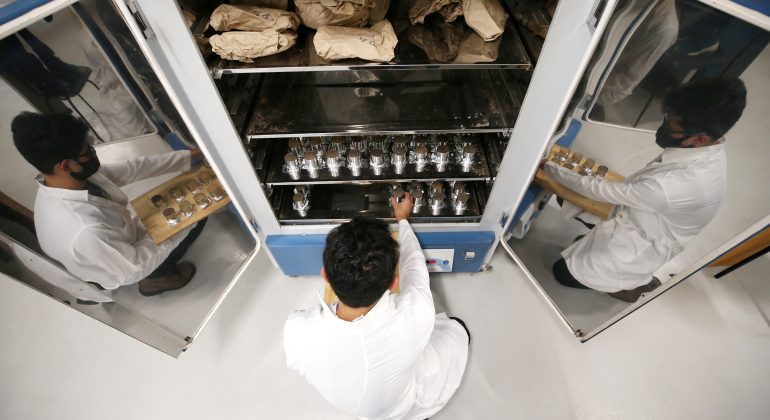Here’s how governments can mobilize technology for the SDGs
- COVID-19 has shown the central role that governments can play in addressing society-wide challenges.
- In 2021, leaders across the public sphere need to integrate technology solutions into the heart of wider rebuilding and recovering efforts.
- Doing so will also help reach our Sustainable Development Goals by 2030.
As the global community continues to grapple with the wide-reaching impacts of the COVID-19 pandemic the hope is that, over the course of 2021, vaccine rollout will finally enable countries to transition from crisis response to ‘recover and rebuild’.
New technologies have played a crucial role in governments eliciting cooperation during the crisis, keeping societies functional in a time of rolling lockdowns, and underpinning solutions across sectors and borders.
The pandemic has further accelerated the pace of digitisation of enterprises and supply chains, connectivity, automation, intelligent solutions and the deployment of tools such as 3D printing, drones, and virtual reality.
And yet, the positives have also brought a social cost: those less digitally ready have been disadvantaged and data privacy and cybersecurity risks have become more prevalent.
As attention, policymaking and investment turns to rebuilding our economies, it is vital that the laser focus on, and cooperation around, technology and innovation continues.
In the latest collaboration between the World Economic Forum and PwC – Harnessing Technology for the Global Goals: A framework for government action – we examine how governments and public sector leadership can drive the uptake of advanced technologies to tackle the wider systemic challenges defined by the UN’s Global Goals (or 17 SDGs) and help us build forward stronger.
This proactive leadership approach will be critical to fostering long-term, sustainable growth and resilience for the 2020s.
A public sector more than capable of mobilizing
‘Governments, perhaps previously and unfairly perceived as slow movers, have showed during the pandemic how quickly they can pivot to meet immediate needs, leveraging the frontiers of technology and human ingenuity in the process.
Examples include Colombia’s rapid distribution of pre-programmed laptops to remote-working students. Then there’s Sierra Leone’s swift development and deployment of a mobile app to monitor deliveries, admissions, discharges and support services at quarantine facilities, in real-time.
The experiences of 2020 showed us that key characteristics that governments need to foster in the months ahead include:
● Adaptability: While the global health crisis continues, technological solutions should be designed for resilience and adaptability. The problems of 2021 aren’t yet truly known, but this sense of adaptability can already be applied to challenges on the horizon such as economic recovery and climate change. At the same time, we must build resilience into economies and communities, to future-proof us from more crises.
● Swiftness: Governments will need to apply the same fast-paced action to long-neglected problems such as hunger, poverty and job access, and explore how technology can be leveraged to dial up action and swiftly so. We must keep in mind that COVID-19 is not the only social and economic problem associated with health issues, loss of life and economic hardship.
● Collaboration: Governments will need to continue building and maintaining the partnerships that have been central to combating COVID-19, whether these are within the public or private sectors. They need to reflect and build on lessons learned during the pandemic, which include supporting innovation and long-term thinking, strengthening supplier relationships, investing in breakthrough R&D, and simplifying procurement processes.
Continued collaboration across all sectors will be essential in leveraging technology to create impact and systemic change at scale for wider challenges, from climate change to biodiversity loss.
So, how can this happen?
In the new Forum and PwC report we outline an action‐oriented checklist to support governments and public sector leaders in enabling the use of technological advancements to deliver progress towards the Global Goals.
There are six key leadership areas vital to unlocking the potential that technology offers, and to manage potential downside risks that can arise.
1. Vision and strategy
Governments need to be proactive in the area of developing and deploying technologies at scale. Any solutions put in place, even with limited resources, can trigger systems-wide change during a time of heightened emergency and tackle multiple social, economic and health issues at once.
To do this, governments need to set an agile, adaptable vision and strategy on what they are hoping to achieve and how they will realise those outcomes with deliberate planning and coordination.
2. Governance and accountability
Delivery of a ‘tech-for-good’ vision and strategy should be supported by the clear assignment of governance and accountability to effective members of leadership teams across government. Developing flexible action plans, offering transparent collaboration groups, and facilitating sandboxing under leadership oversight should all form a part of this.

